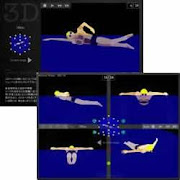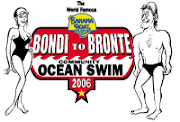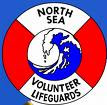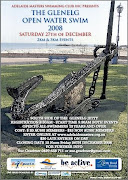.jpg) 133 years ago, almost to the day, Great Britain's Captain Matthew Webb became the first person to successfully cross the 21-mile English Channel in 1875 - on his third attempt.
133 years ago, almost to the day, Great Britain's Captain Matthew Webb became the first person to successfully cross the 21-mile English Channel in 1875 - on his third attempt. The news of Captain Webb's exploit slowly worked its way around the globe as his unprecedented crossing captured the attention of the world - and launched the world of open water swimming.
 In August 2008, 25 of the world's best open water swimmers will take to the waters in Beijing for the Olympic 10K Marathon Swim. Their exploits will be captured, photographed and analyzed in real-time on TV, via the Internet and over mobile devices for the enjoyment of a global audience.
In August 2008, 25 of the world's best open water swimmers will take to the waters in Beijing for the Olympic 10K Marathon Swim. Their exploits will be captured, photographed and analyzed in real-time on TV, via the Internet and over mobile devices for the enjoyment of a global audience.How did the sport advance from a 21-hour 45-minute solo effort by a breaststroking British man to a global unveiling of 25 extraordinarily fast, well-trained, strategically-thinking athletes from all corners of the world?
Throughout the decades, the sport has been practiced, supported and promoted by thousands of dedicated individuals of various ages, abilities and backgrounds. The collective knowledge, efforts and passion have enabled the sport to grow and develop at a pace that is best appreciated by a marathon swimmer.
But, looking back in history, certain circumstances and situations served as a catalyst in moving the sport forward in unprecedented ways.
One key occurrence happened in January 1998 at the World Swimming Championships in Perth, Australia. After the glow of the 5K and 25K races that were dominated by the Russians and Americans, a trio sat down to map out a realistic plan to get the sport of open water swimming into the Olympics. Chris Guesdon of Australia, Sid Cassidy of the US and Dennis Miller of Fiji were those remarkable individuals.
In a story that would be immortalized in Silicon Valley, Chris drew a proposed course and competition outline on a napkin. A simple paper napkin.
Sketching out a unique idea that would ultimately be showcased in Beijing, Chris recommended to Sid and Dennis that the sport would need to be ready to execute this plan when they least expected it.
At the September 1998 FINA meeting in San Felice, Italy, Chris introduced the Olympic 10K Marathon Swim model to the the FINA Technical Open Water Swimming Committee. After much internal discussion and debate, the innovative plan was accepted. While many purists in the sport wanted an Olympic swim of at least 25K (16 miles) in distance, Chris and the visionary committee members believed a shorter swim within a relatively small body of water where the athletes could be seen, photographed and filmed would more likely be acceptable to the influential International Olympic Committee members.
Chris, Sid and Dennis understood, along with their FINA peers, that a 10K race would attract a world-class (pool) swimmer and could be easily showcased on TV in a relatively inexpensive way in a rowing course - while capturing all the excitement and challenges of a more traditional, longer race.
Over the years, and after lobbying and planning while the sport continued to develop under the FINA auspices, the current FINA members improved and advanced the competition model as initially proposed on a napkin in 1998.
History will continue to be written in the Olympic 10K Marathon Swims in Beijing and London.
Copyright © 2008 by World Open Water Swimming Association




















No comments:
Post a Comment